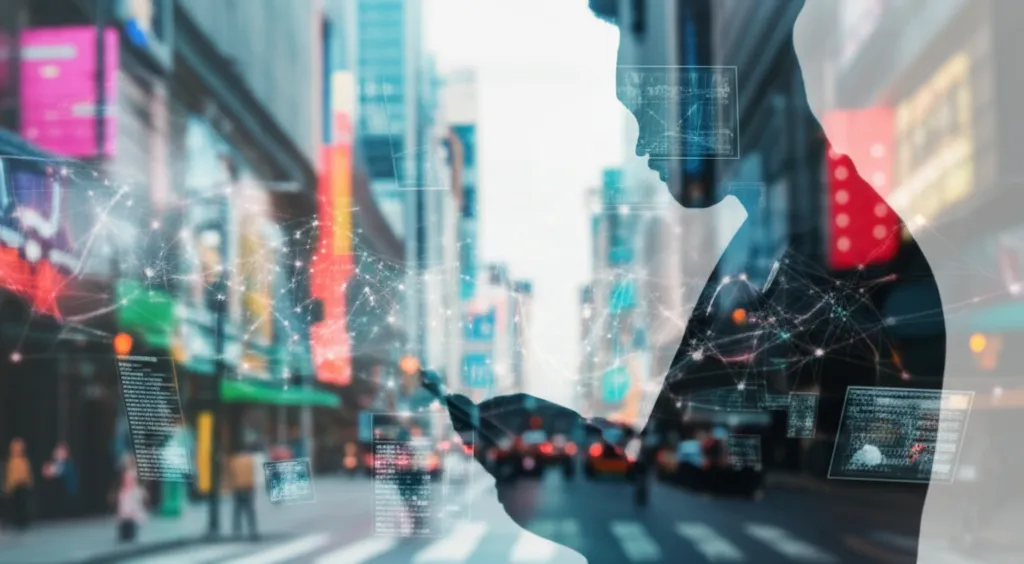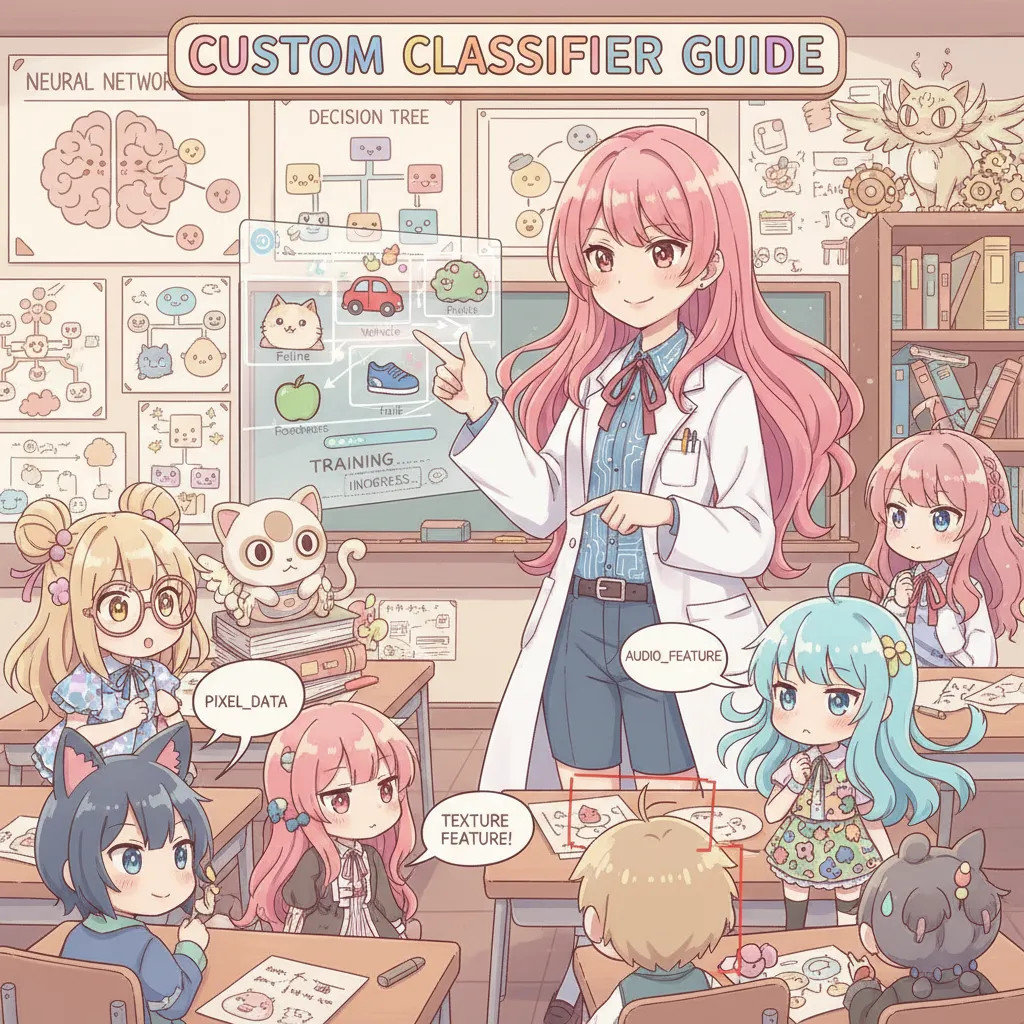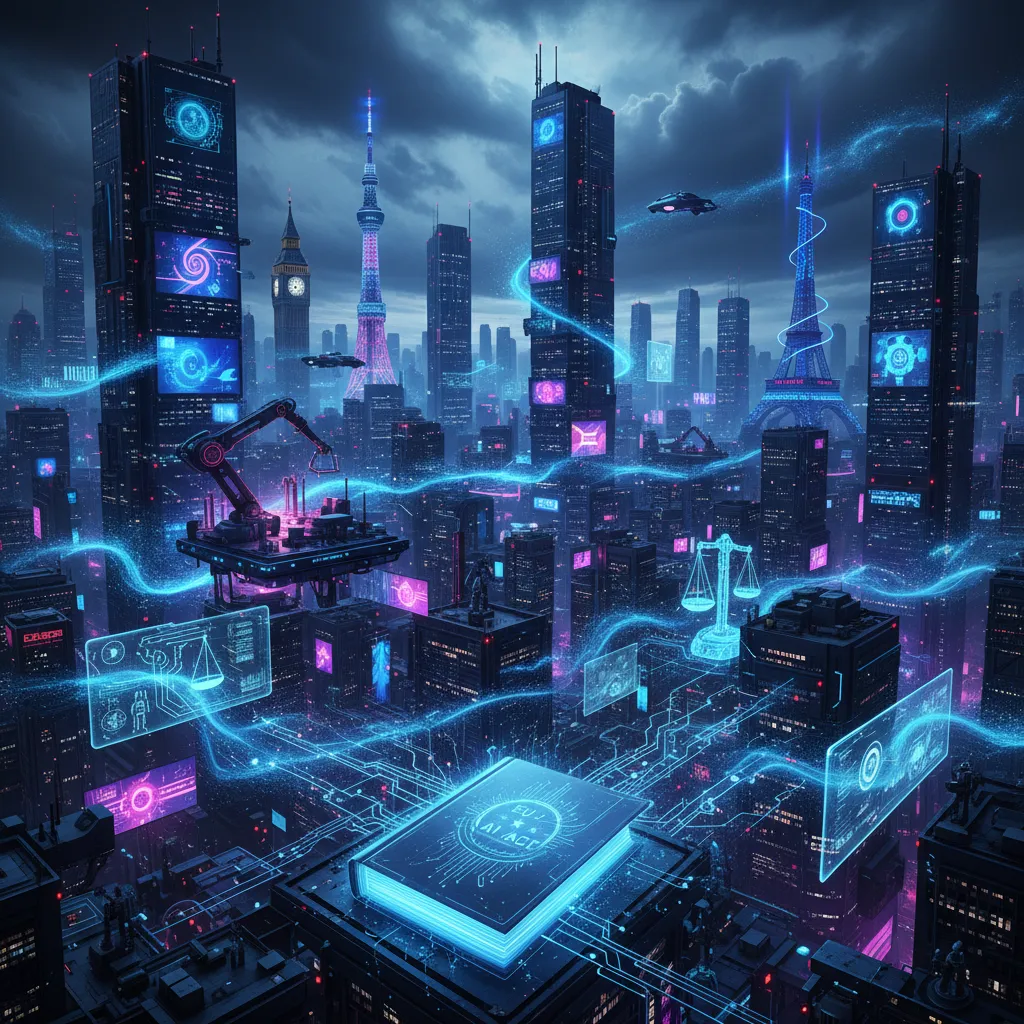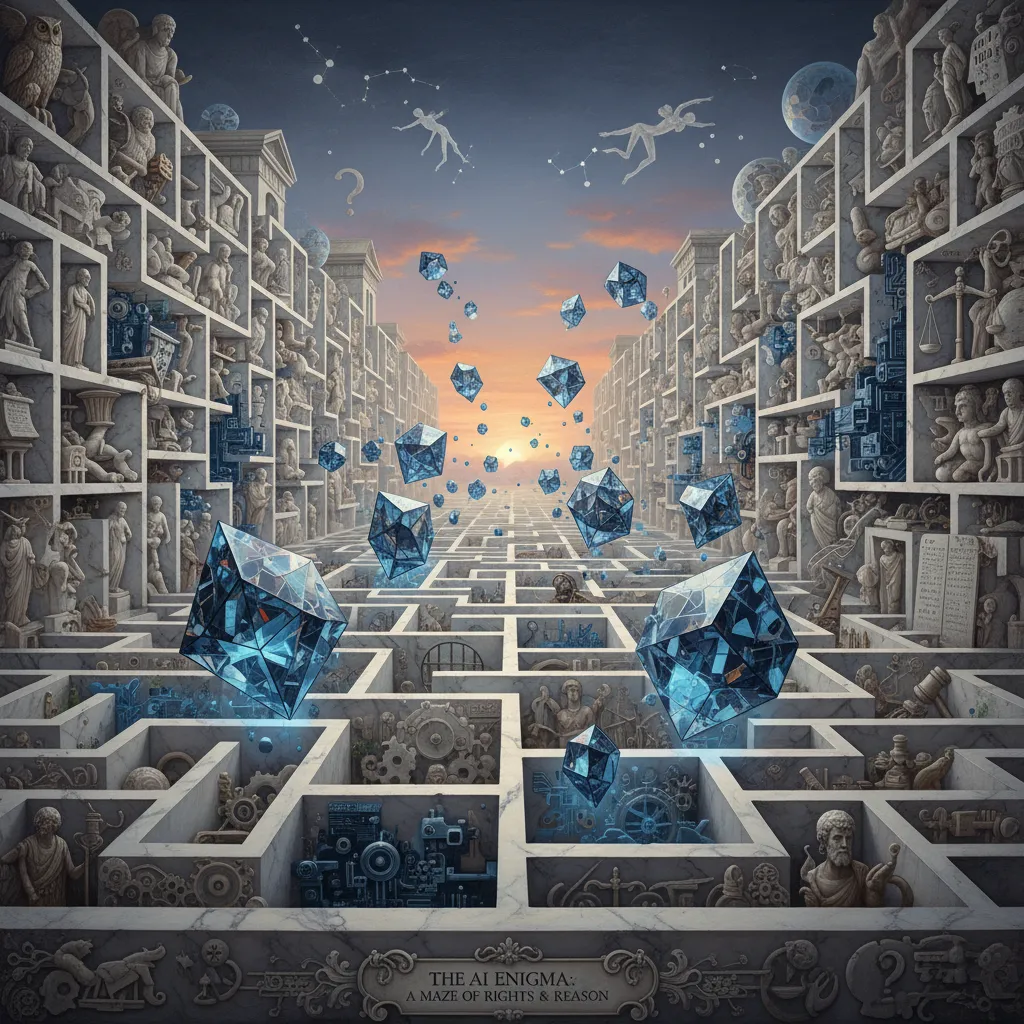It started with a prank by my smart assistant changing my shopping list — that’s when I realized AI was already sneaking into my life. We hear these buzzwords (AI, ML, DL) tossed around, but what do they really mean? Let’s demystify these techy terms through real-life stories, down-to-earth explanations, and a little playful skepticism from my own daily experiences.
AI in the Wild: How I Discovered Artificial Intelligence Wasn’t Just Sci-Fi
It started with a simple beep from my fridge. I was making coffee when a notification popped up on my phone: Your milk is expiring soon. For a split second, I wondered if my fridge had developed a mind of its own. Was it watching me? Did it know my breakfast habits? Of course, it hadn’t become self-aware overnight. But that moment made me realize just how deeply artificial intelligence has woven itself into my everyday life—often in ways I barely notice.
When most people hear “AI,” they picture robots from movies or supercomputers plotting world domination. The reality is far less dramatic, but far more interesting. AI isn’t just about futuristic androids; it’s about the technology quietly powering the devices and services we use every day. From virtual assistants like Siri and Alexa to the smart recommendations on Netflix, AI is everywhere. Even my fridge, with its ability to track expiration dates, is a small example of how AI has become part of our daily routines.
But what actually counts as “intelligent” in technology? It’s easy to assume that anything automated is AI, but that’s not quite accurate. Research shows that AI is a broad field, covering everything from simple rule-based systems to complex learning algorithms. Within AI, there’s machine learning (ML)—systems that improve through experience—and deep learning (DL), which uses neural networks to mimic the way our brains process information. As studies indicate, deep learning is what enables advanced features like voice recognition and image analysis, often outperforming traditional machine learning when there’s enough data.
It’s important to remember that AI isn’t magic. It doesn’t “think” like a human, and it certainly doesn’t have feelings or desires. Instead, it follows patterns, learns from data, and makes predictions based on what it’s seen before. As one expert put it,
“AI is not about replacing humans, but about augmenting our capabilities and making our lives easier.”
That’s why my fridge isn’t plotting against me—it’s simply using a set of programmed rules and a bit of machine learning to help me avoid spoiled milk.
So, the next time your smart device surprises you, remember: it’s not science fiction. It’s just AI, quietly working behind the scenes, making everyday life a little bit smarter.
My Rocky Relationship with Machine Learning: Why My Playlist Knows Me Better Than My Friends
If you’ve ever wondered why your music playlist seems to “get you” better than your closest friends, you’re not alone. My daily life is quietly shaped by Machine Learning in ways I barely notice—until it gets something hilariously wrong. From the shows I binge-watch to the groceries that magically appear in my online shopping cart, Machine Learning is the silent partner influencing my choices.
Let’s start with the basics. Machine Learning, at its core, is about computers learning from data. Instead of following a strict set of instructions, these systems spot patterns in what I do and try to predict what I’ll want next. For example, when I listen to a new artist on my favorite streaming app, the algorithm takes note. It compares my choices to millions of others, then suggests songs it thinks I’ll love. Sometimes, it’s eerily accurate—other times, I’m left wondering if my playlist thinks I’m living a double life as a polka enthusiast.
This isn’t just about music. Machine Learning is woven into almost every digital experience I have. When I open a video platform, the recommendations are tailored to my past viewing habits. My grocery app nudges me with “You might like” suggestions based on what I’ve bought before (and, occasionally, what my neighbor probably buys). Even my email spam filter is powered by Machine Learning, quietly sorting out the junk so I don’t have to.
What’s fascinating is how seamlessly these systems blend into my routine. Research shows that Machine Learning is a key part of the larger AI family, sitting between traditional AI and the more complex world of Deep Learning. While Deep Learning uses neural networks to tackle massive datasets—think self-driving cars or voice assistants—Machine Learning is the workhorse behind most of my everyday tech. As one industry report puts it, “70% of customers notice a difference between companies that effectively use AI and those that do not.” That’s not just a statistic; it’s a reflection of how much these algorithms shape our digital lives.
Of course, Machine Learning isn’t perfect. There are days when my recommended playlists seem to have a mind of their own, or my shopping app suggests cat food when I don’t even own a cat. But for every miss, there’s a moment when it feels like the algorithm really knows me—sometimes better than my friends do.
Deep Learning: Like Machine Learning, But with a Brainy Twist
The first time I saw a diagram of a neural network, I’ll admit—I thought it looked like a plate of spaghetti. Lines looping everywhere, circles stacked in layers, and arrows darting in every direction. It was messy, but also oddly fascinating. That doodle, as it turns out, was my introduction to deep learning—a field that’s both a part of machine learning and, in many ways, its more ambitious sibling.
To put it simply, deep learning is a specialized branch within machine learning. While machine learning covers a wide range of techniques for teaching computers to learn from data, deep learning specifically uses neural networks—systems inspired by the human brain. These networks are made up of layers of interconnected nodes (or “neurons”), and the “deep” part comes from stacking many of these layers on top of each other.
What really sets deep learning apart is its appetite for massive datasets. Traditional machine learning models can do a lot with smaller amounts of data and a bit of human guidance. Deep learning, on the other hand, thrives when you feed it mountains of information—think millions of images, hours of audio, or endless streams of text. The more data you give it, the better it gets at recognizing patterns and making predictions. As research shows, “Deep Learning uses neural networks to learn and predict, often outperforming traditional ML models with large datasets.”
I see deep learning in action almost every day, often without even realizing it. Voice assistants like Siri and Alexa? Powered by deep learning models that can understand and respond to natural language. Those apps that turn your selfies into Renaissance paintings or generate wild, dreamlike images? That’s generative AI, another deep learning marvel. Even the spam filter in my email and the facial recognition on my phone are products of this technology.
Generative AI, in particular, has taken the world by storm. These models don’t just analyze data—they create new content that looks and feels real. From writing poems to composing music and generating artwork, deep learning is behind many of the viral trends and tools we see today. As one industry report puts it, “Current AI tools include advanced neural networks and generative models that are transforming industries like media and customer service.”
Wild Card: Would I Let an AI Order My Pizza? A Fun Look at Trust, Hype, and the Future
Every now and then, I find myself wondering just how much of my daily life I’d be willing to hand over to artificial intelligence. For example, would I trust an AI to order my pizza? It’s a playful question, but it gets to the heart of how we perceive the growing influence of AI, machine learning, and deep learning in our routines. Would the AI pick something classic like pepperoni, or would it surprise me with pineapple and jalapeños? The answer isn’t as straightforward as it might seem.
Let’s imagine a scenario: I’ve connected my food delivery app to a generative AI that’s been trained on deep learning models. This AI doesn’t just look at my previous orders—it scans my Instagram food photos, analyzes the colors and ingredients, and even reads my captions for hints about my cravings. Suddenly, I get a notification: “Based on your recent posts, may I suggest a thin-crust pizza with roasted veggies, feta, and a drizzle of hot honey?” I have to admit, it sounds tempting—and a little uncanny.
This is where the distinction between AI, machine learning, and deep learning becomes more than just technical jargon. AI is the broad concept, the idea that machines can mimic human intelligence. Machine learning is a subset, focusing on algorithms that learn from data—like my past pizza orders. Deep learning, which powers generative AI, uses neural networks to find patterns in huge datasets, such as my entire social media history. Research shows that deep learning models can generate surprisingly accurate and creative suggestions, often outperforming traditional machine learning when there’s enough data to work with.
But here’s where I pause. Do I really want an AI making choices that feel so personal? There’s a certain hype around AI-driven experiences—sometimes justified, sometimes not. Studies indicate that 70% of customers notice a difference when companies use AI effectively, especially in customer service. Still, when it comes to something as personal as food, trust becomes a bigger issue. Would I feel comfortable letting an algorithm decide my dinner, or does that cross a line?
As AI tools become more advanced, the line between convenience and personal preference gets blurrier. The future may hold even more personalized, AI-driven experiences, but for now, I’m still deciding if I’m ready to let an algorithm pick my pizza toppings.
Conclusion: Why Knowing the Difference Actually Matters (Even If You Just Want Better Pizza)
As I wrap up this exploration into the world of AI, machine learning, and deep learning, I find myself reflecting on how these concepts—though often used interchangeably—are actually quite distinct, both in theory and in practice. Artificial Intelligence is the big umbrella, covering the idea of machines doing things that once required human smarts. Machine learning sits under that umbrella, giving computers the ability to learn from data and improve over time. Deep learning, in turn, is a specialized branch of machine learning, using layered neural networks to tackle especially complex problems.
But why does any of this matter to us in our daily lives? Honestly, it’s not just about sounding smart at dinner parties (though that’s a nice bonus). Understanding these differences can help us make sense of the technology that’s quietly shaping our routines, from the apps that recommend our next favorite pizza place to the digital assistants that help us organize our day. Research shows that AI-driven tools are becoming more common in customer service, with 70% of customers noticing a difference between companies that use AI effectively and those that don’t. That’s not just a statistic—it’s a sign that these technologies are already changing our expectations and experiences.
I’ve learned that embracing these advances, rather than fearing them, can actually make life a bit richer—or at the very least, more organized. Whether it’s a deep learning model suggesting the perfect pizza topping or a machine learning algorithm helping me avoid traffic, these systems are here to help. Of course, it’s healthy to approach new tech with a dose of skepticism and curiosity. Not every AI-powered feature is a game-changer, and sometimes, things don’t work as promised. That’s okay. As one expert put it, “AI is not magic; it’s math and data.” That perspective keeps things grounded.
So, as we move forward, I encourage you to stay curious. Ask questions. Laugh a little when your digital assistant misunderstands you (again). The more we understand about AI, machine learning, and deep learning, the better equipped we are to use these tools wisely—and maybe, just maybe, to order better pizza next time.



